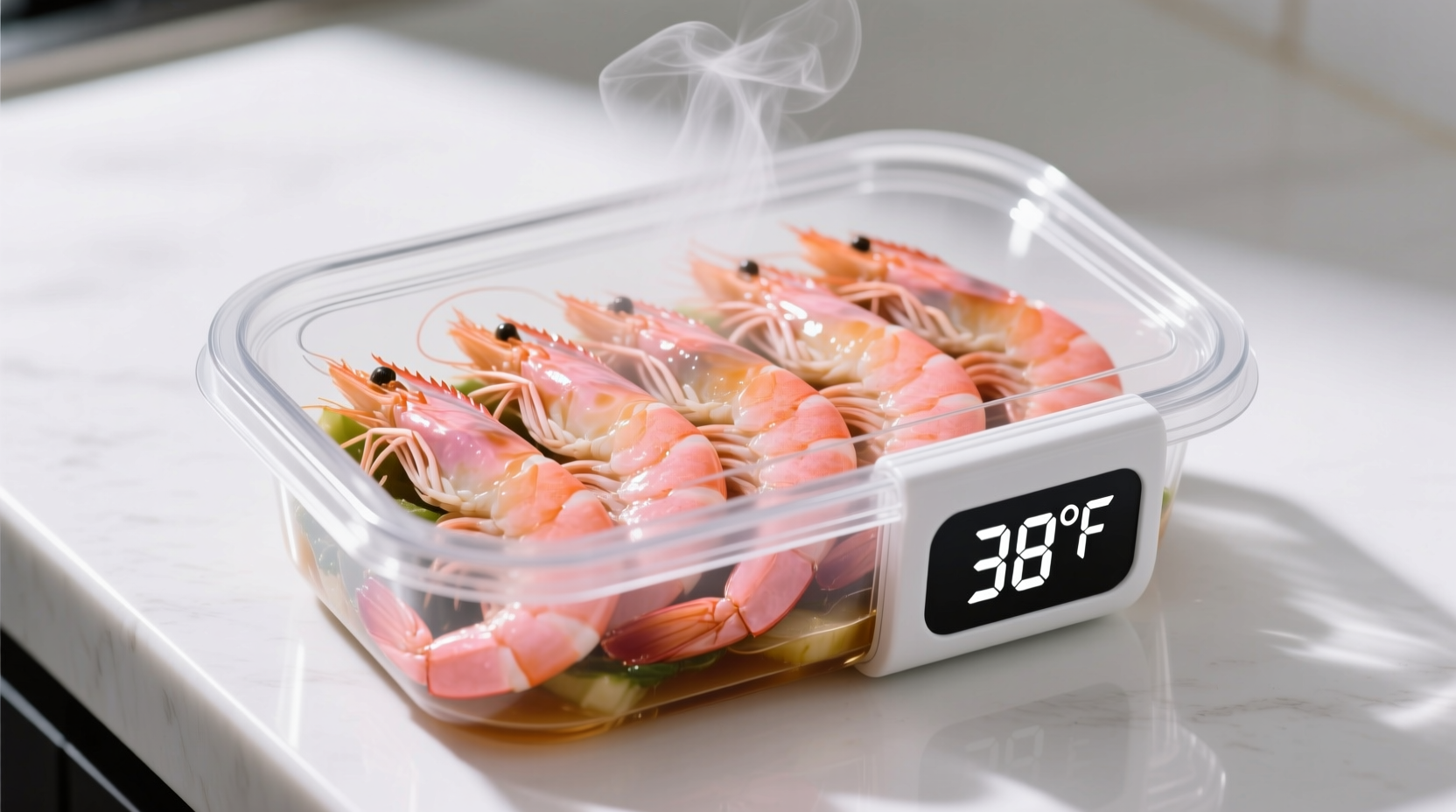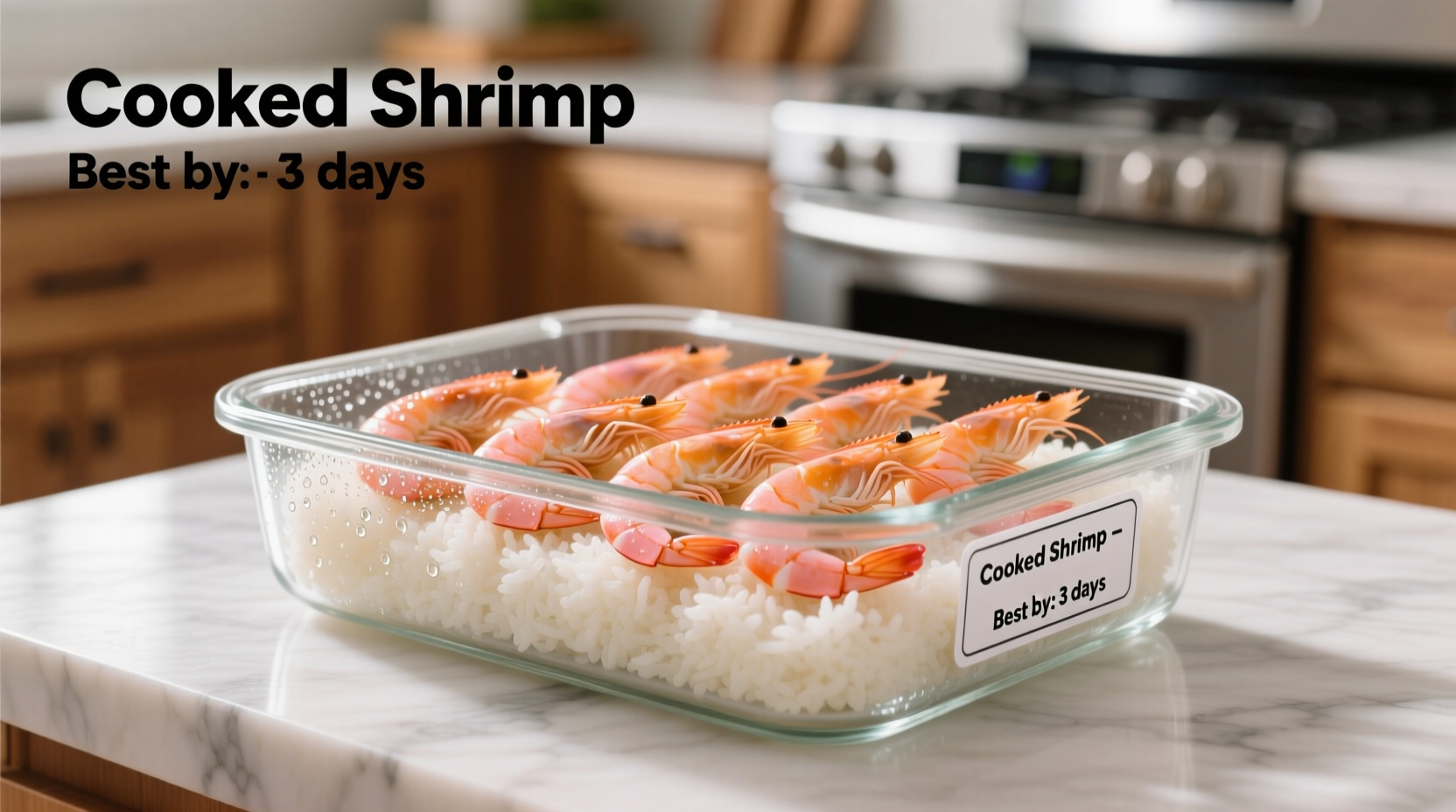Discover exactly how to maximize freshness, recognize spoilage signs, and safely extend your cooked shrimp's shelf life. This guide delivers actionable food safety practices backed by USDA guidelines and culinary science—ensuring you never waste good seafood or risk illness from questionable leftovers.
The Science Behind Seafood Safety
Cooked shrimp enters the bacterial danger zone immediately after cooking. Unlike raw seafood, which has protective enzymes, cooked shrimp loses natural defenses against pathogens like Vibrio and Listeria. These bacteria double every 20 minutes between 40°F and 140°F, making proper cooling and storage critical.
Shrimp's high moisture content and protein density create an ideal breeding ground for microbes. The University of California Food Safety Program confirms that cooked shellfish deteriorates faster than many other proteins due to its delicate cellular structure that breaks down rapidly post-cooking.
Step-by-Step Refrigeration Protocol
Follow this professional kitchen-tested method to maximize freshness:
- Cool rapidly: Spread shrimp in a single layer on a baking sheet for 15-20 minutes before storage
- Container selection: Use airtight glass containers or BPA-free plastic with minimal headspace
- Moisture control: Place paper towel beneath and atop shrimp to absorb condensation
- Strategic placement: Store on middle refrigerator shelf away from door (coldest consistent zone)
- Temperature verification: Confirm refrigerator maintains 37-40°F using a standalone thermometer
| Storage Day | Quality Indicators | Recommended Action |
|---|---|---|
| Day 1-2 | Firm texture, mild ocean scent, vibrant pink color | Safe for any preparation |
| Day 3 | Slightly softer texture, faint ammonia hint when warmed | Consume only after thorough reheating to 165°F |
| Day 4 | Noticeable texture change, stronger odor | Discard immediately – do not taste test |
Decoding Spoilage: Beyond the Clock
While the 3-4 day rule provides a safety baseline, always verify freshness using these sensory checkpoints:
- Smell test: Discard if you detect sour, ammonia-like, or overly fishy odors (fresh cooked shrimp has mild ocean scent)
- Texture assessment: Slimy or sticky surface indicates bacterial growth – properly stored shrimp remains firm
- Visual inspection: Discoloration (yellowing, gray spots) or milky liquid surrounding shrimp signals spoilage
The USDA Food Safety and Inspection Service emphasizes: "When in doubt, throw it out." Never rely solely on expiration dates – sensory evaluation is your most reliable indicator. Their research shows 68% of foodborne illness cases from seafood stem from consumers ignoring spoilage signs despite proper storage timelines.
Extending Shelf Life: Freezing Techniques
For longer storage, freezing preserves cooked shrimp for 2-3 months while maintaining quality:
- Flash freeze shrimp in single layer on parchment paper for 2 hours
- Vacuum seal or use heavy-duty freezer bags with air removed
- Label with date and contents ("Cooked Shrimp - MM/DD")
- Store at 0°F or below for optimal preservation
Thaw frozen cooked shrimp safely by:
- Refrigerator method: 12-24 hours (best for meal prep)
- Cold water bath: Submerge sealed bag in cold water (30-60 minutes)
- Never thaw at room temperature or in warm water

Avoid These Common Storage Mistakes
Professional kitchens consistently avoid these critical errors:
- Room temperature lingering: Leaving shrimp out more than 2 hours (1 hour above 90°F)
- Improper container use: Storing in takeout containers with loose-fitting lids
- Cross-contamination: Placing near raw meats or strong-smelling foods like onions
- Temperature inconsistency: Using refrigerator door shelves where temperatures fluctuate
The Food and Drug Administration's 2024 Food Code Update reinforces that cooked seafood requires stricter handling than many consumers realize. Their data shows cooked shrimp left at room temperature for just 90 minutes can reach bacterial levels 10,000 times higher than safety thresholds.
Special Considerations for Different Preparations
Storage duration varies slightly based on preparation method:
- Plain boiled shrimp: Maximum 4 days (least vulnerable to spoilage)
- Marinated shrimp: 3 days (acidic ingredients accelerate texture breakdown)
- Cream-based dishes: 3 days (dairy components spoil faster)
- Spicy preparations: 3 days (heat doesn't prevent bacterial growth)
Remember that any added ingredients affect shelf life. A shrimp pasta salad with mayonnaise follows the shortest timeline of its most perishable component – typically 3 days regardless of the shrimp's condition.
Food Safety Resources
For real-time guidance, consult these authoritative sources:
- USDA Food Safety Hotline: 1-888-674-6854 (available 10am-6pm ET)
- FoodSafety.gov's FoodKeeper App for storage timelines
- CDC's guidelines for large-batch cooking











 浙公网安备
33010002000092号
浙公网安备
33010002000092号 浙B2-20120091-4
浙B2-20120091-4